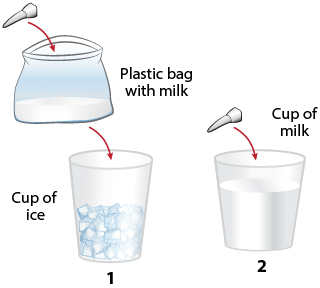Is this your child's symptom?
- Injury to a tooth
If NOT, try one of these:
Types of Tooth Injuries
- Loosened Tooth. May bleed a little from the gums. Usually tightens up on its own.
- Displaced Tooth. Usually pushed inward. Needs to be seen.
- Chipped Tooth. Minor fracture with small corner of tooth missing tooth. The fracture goes to the dentin (yellow color), not the pulp (red color). Not painful. See dentist during office hours.
- Fractured Tooth. The fracture goes down to the pulp. The pulp is where the blood supply and nerves to the tooth are located. The main finding is a red dot or bleeding in the center of the tooth. Very painful. Needs a root canal to save the tooth.
- Knocked-Out Permanent Tooth. Also called an avulsed tooth. A dental emergency. Needs to be re-implanted within 2 hours.
- Knocked-Out Baby Tooth. It cannot be re-implanted. See during dental office hours.
Symptoms
- The main symptom is pain.
- Minor bleeding from the gums may occur.
When to Call for Tooth Injury
Self Care at Home
|
Care Advice for Minor Dental Injuries
- Cold for Pain:
- For pain, put a piece of ice or a popsicle on the injured gum.
- You can also use a cold pack on the cheek.
- Apply for 20 minutes.
- Pain Medicine:
- To help with the pain, give an acetaminophen product (such as Tylenol).
- Another choice is an ibuprofen product (such as Advil).
- Use as needed.
- Soft Diet:
- For any loose teeth, offer a soft diet.
- Avoid foods that need much chewing.
- You can go back to a normal diet after 3 days. By then, the tooth should be tightened up.
- What to Expect:
- Tooth pain most often goes away in 2 or 3 days.
- Call Your Dentist If:
- Pain becomes severe
- Cold fluids cause tooth pain
- Tooth turns a darker color
- You think your child needs to be seen
- Your child becomes worse
And remember, contact your doctor if your child develops any of the 'Call Your Doctor' symptoms.
Disclaimer: this health information is for educational purposes only. You, the reader, assume full responsibility for how you choose to use it.
Copyright 2000-2023. Schmitt Pediatric Guidelines LLC.

First Aid - Tooth (Adult)- Replace if Knocked Out
To save the tooth, it must be put back in the socket (re-implanted) as soon as possible. Two hours is the limit for survival of the tooth. Right away is best.
Here are the steps for putting the tooth back in the socket:
- Step 1: Rinse off the tooth with saliva or water. Do not scrub the tooth.
- Step 2: Place it in the socket facing the correct way. Press down on the tooth with your thumb until the top of the tooth is level with the adjacent tooth.
- Step 3: Lastly, bite down on a wad of cloth to stabilize the tooth until you can be seen by a dentist. If your dentist is not immediately available, then go to the emergency department (ER).
If the tooth cannot be put back in its socket: Place the tooth in either milk or saliva to keep it from drying out and go right away to the dentist. Again, If your dentist is not immediately available, then go to the ER.
Special Notes:
- Even if you get the tooth back in the socket right away, only time will tell whether the tooth will live. It may not.
- Baby teeth cannot be re-implanted.

First Aid - Tooth (Child's) Knocked-Out Transport
To save the tooth, it must be put back in its socket as soon as possible. 2 hours is the outer limit for survival. Right away is best. If more than 30 minutes away from dental care, try to replace the tooth. Put it back in the socket before going to the dentist. Use the method below:
- Rinse off the tooth with saliva or water (do not scrub it).
- Replace the tooth into the socket, facing the correct way.
- Press down on the tooth with your thumb. Do this until the top of the tooth is level with the tooth next to it.
- Have your child bite down on a wad of cloth. This will help to keep the tooth in place until you can reach your dentist.
- Note: Baby teeth can't be re-implanted.
If not able to put the permanent tooth back in its socket, follow these instructions:
- It is very important to keep the tooth moist. Do not let it dry out.
- Transport the tooth in milk or saliva. Milk is best.
- Milk Transport Option 1 (best). Place the tooth in a small plastic bag with some milk. Put the plastic bag in a cup of ice.
- Milk Transport Option 2. Place the tooth in a cup of cold milk.
- Saliva Transport Option 1 - for Child 12 Years or Older. Put the tooth inside the child's mouth. Be careful not to swallow it.
- Saliva Transport Option 2. Put the tooth in a cup. Keep the tooth moist with child's saliva (spit).
